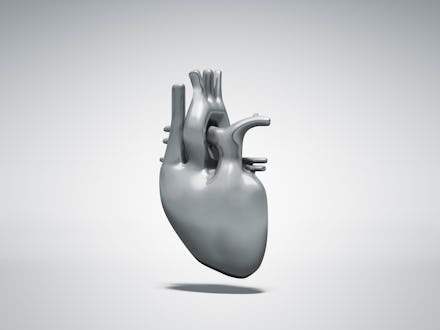Coronavirus can damage your heart, even if you're young and asymptomatic

As the number of coronavirus cases grows, so, too, does the list of lasting harms the disease appears to inflict. While you’re probably familiar with the toll the virus can take on your respiratory system, evidence has surfaced in recent weeks that it can harm your heart, too, even if you’re asymptomatic. Although serious heart complications associated with the disease seem rare, they can be life-threatening, so it’s important to be vigilant. Here’s what COVID-19 can do to your heart.
Inflammation of the heart muscle, or myocarditis, seems to stem from the novel coronavirus attacking the heart, or the inflammation caused by the immune system overreacting to the virus, Scientific American explains. It can occur at any age. In a study that has yet to be peer reviewed, researchers detected the virus in the heart muscle of six COVID-19 patients reported to have died of respiratory failure, without signs of heart involvement, or previous history of heart disease.
The good news is that an estimated 50% of myocarditis cases heal on their own without chronic complications, Scientific American reports, including some acute cases, which may need only hospital monitoring and some heart medications. Steroids might benefit younger COVID-19 patients who seem to have an autoimmune version of myocarditis, Ossama Samuel, associate chief of cardiology at Mount Sinai Beth Israel in New York, told the magazine.
But complications, if they occur, can be serious, and include irregular heartbeat, chronic heart failure and sudden death. Former Florida State basketball player Michael Ojo died of apparent heart complications last month, shortly after recovering from COVID-19.
While some people with myocarditis have chest pain, shortness of breath, fever, and other symptoms, others have none, making it hard to diagnose, per Scientific American. Some reports estimate it may be responsible for as many as 7% of COVID-19 deaths, but others believe this figure to be lower. The irregular heartbeat that can occur with the condition appears quite common in COVID-19 patients, although its exact prevalence among them remains unknown.
Complicating matters further, myocarditis can emerge well after someone recovers from COVID-19. Samuel has seen some younger adults who’ve developed myocarditis a month after recovering from the disease, according to Scientific American. One patient, athletic and in his 40s, has to wear a LifeVest defibrillator due to a recurring irregular heartbeat, and may need a permanent defibrillator. His heart tissue also shows potentially permanent scarring.
In fact, people with COVID-19 may show signs of myocarditis months after infection, according to several studies, Scientific American reports. In one recent study of 100 patients who’d recovered from COVID-19, most of whom had mild to moderate symptoms, 60% had ongoing myocardial inflammation about two months after initially testing positive for the disease. “My personal take is that COVID will increase the incidence of heart failure over the next decades,” Eike Nagel of University Hospital Frankfurt, the lead investigator of the study, wrote in an email to Scientific American, but noted that individual patients probably don’t need to worry.
The findings on COVID-induced myocarditis underscore why sports leagues have been grappling with whether to let athletes play this season, per Scientific American. Over a dozen athletes at Power Five schools have been diagnosed with myocardial, or heart muscle, injury post-COVID-19 infection, per ESPN. The outlet reported last month that Boston Red Sox pitcher Eduardo Rodriguez would sit out the rest of the season due to myocarditis, also thought to have resulted from the disease. Samuel advises athletes diagnosed with myocarditis to avoid playing for least three to six months, or otherwise risk seriously irregular heartbeat or sudden death.
The best way to prevent COVID-19-induced myocarditis is to avoid infection in the first place, per Scientific American. Until a vaccine becomes widely available, that means social distancing, wearing your mask, and all the other precautions you’ve incorporated into your routine over the past few months.